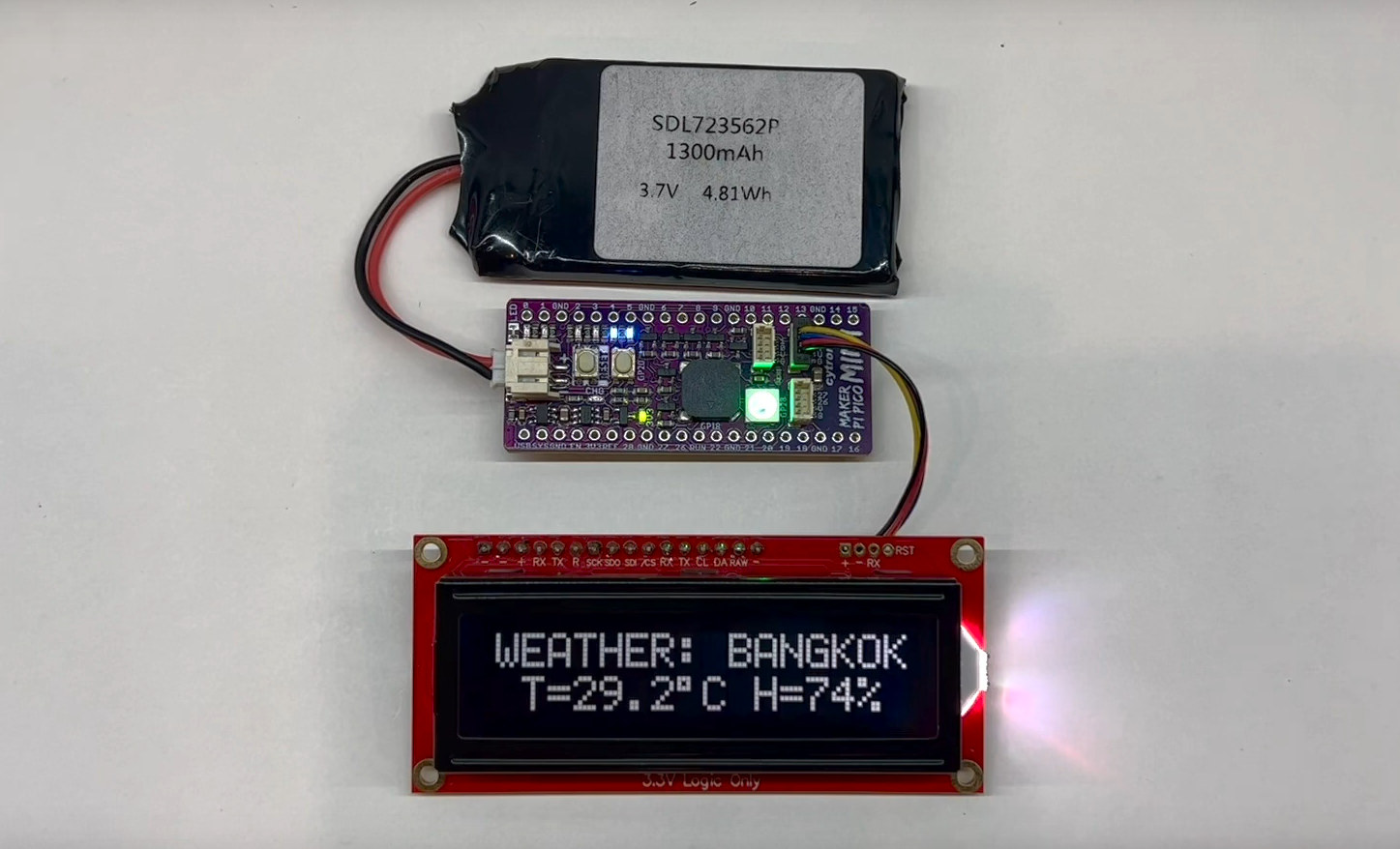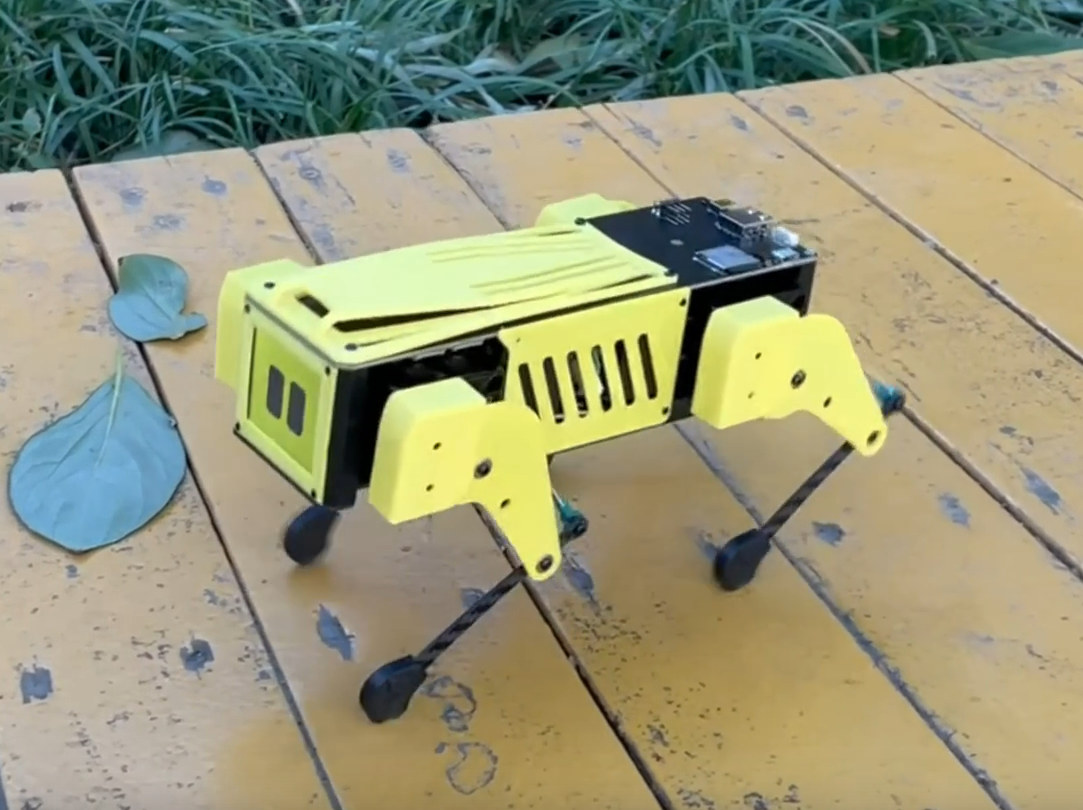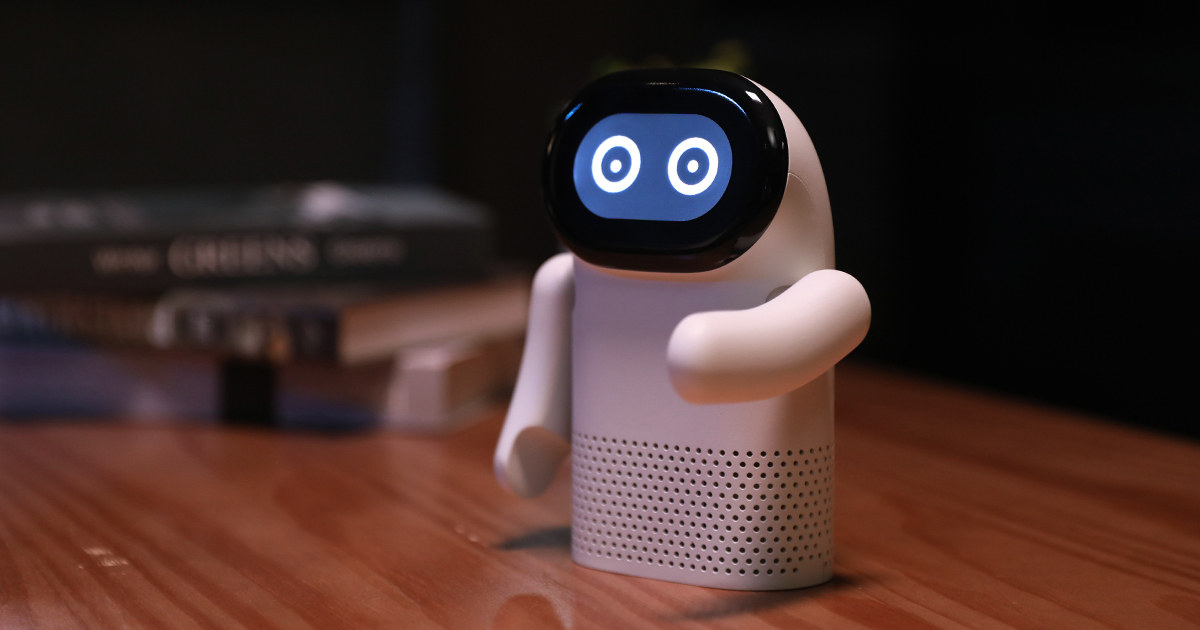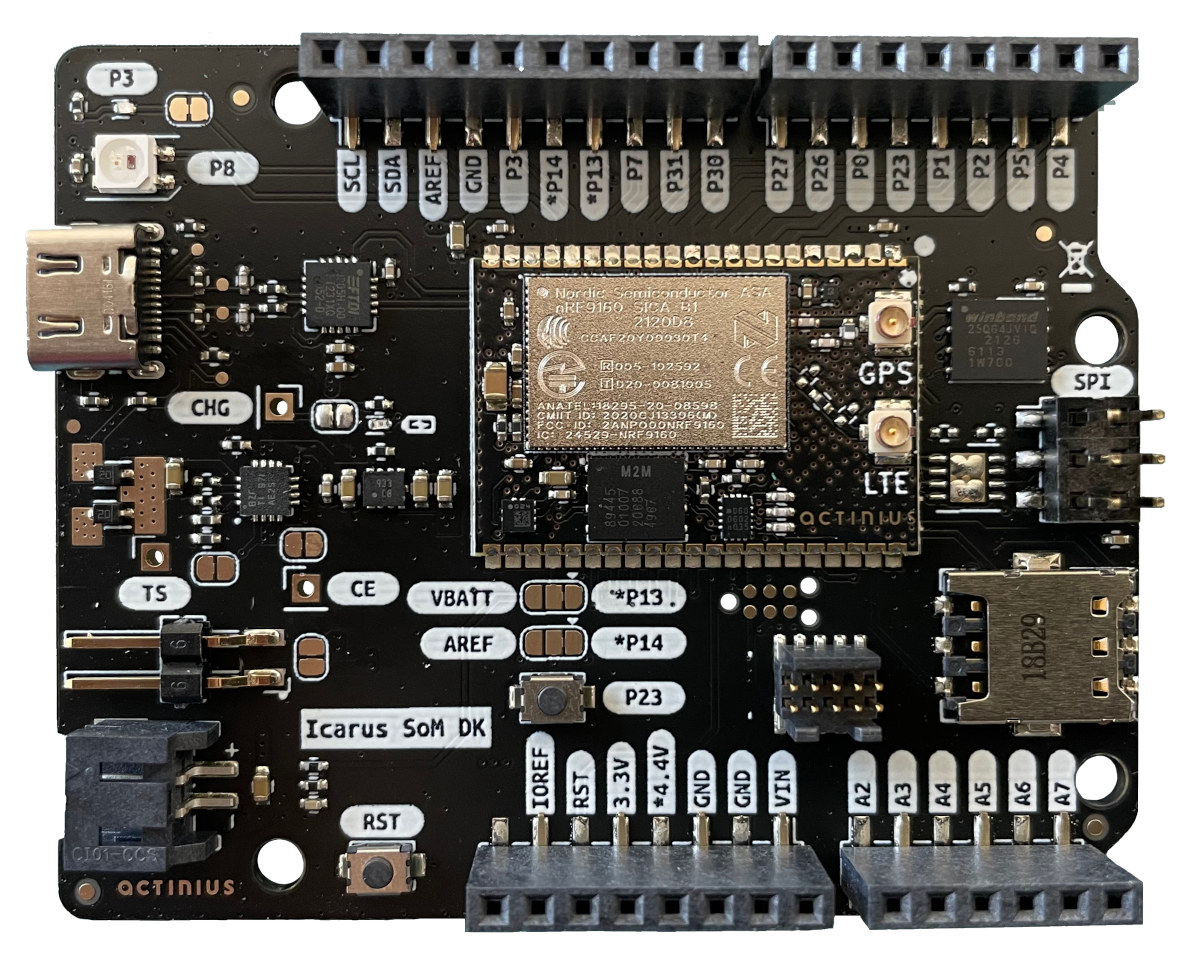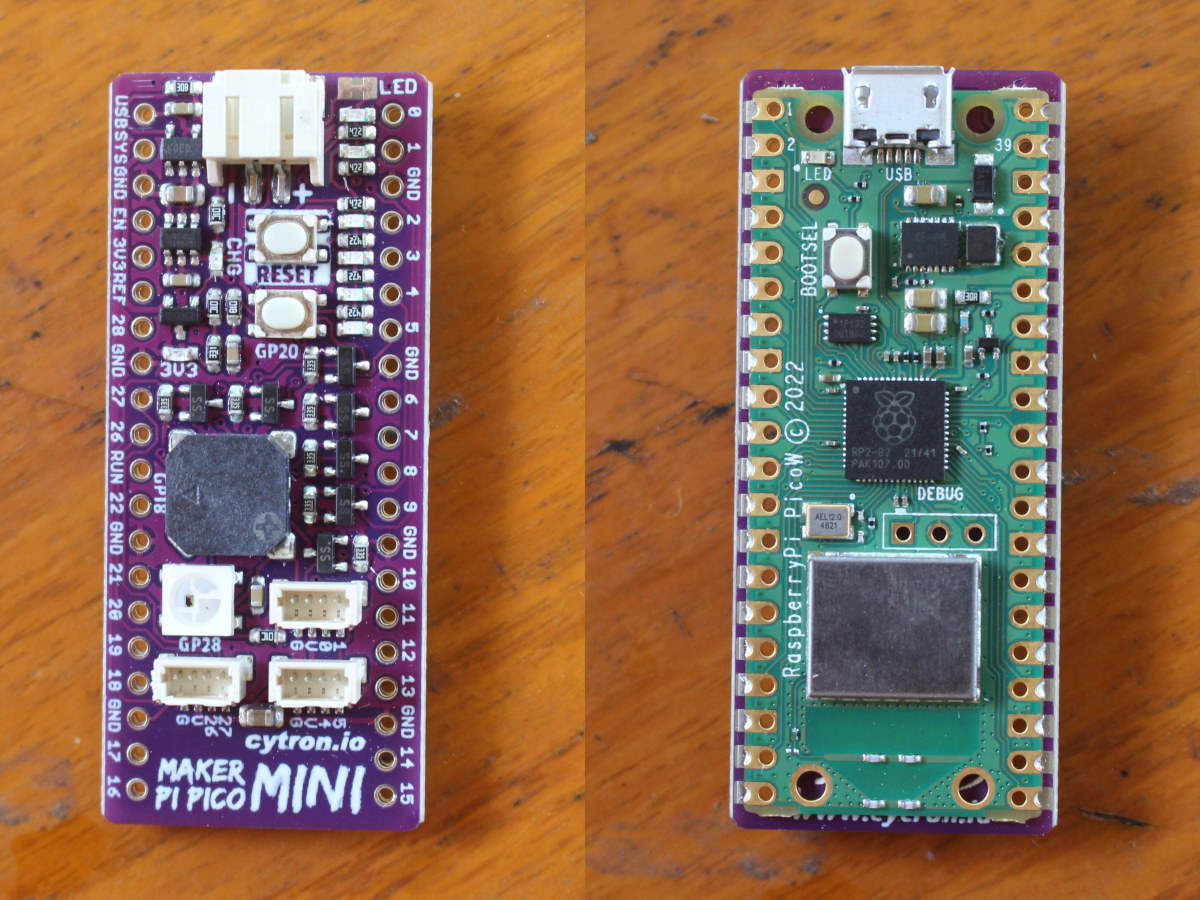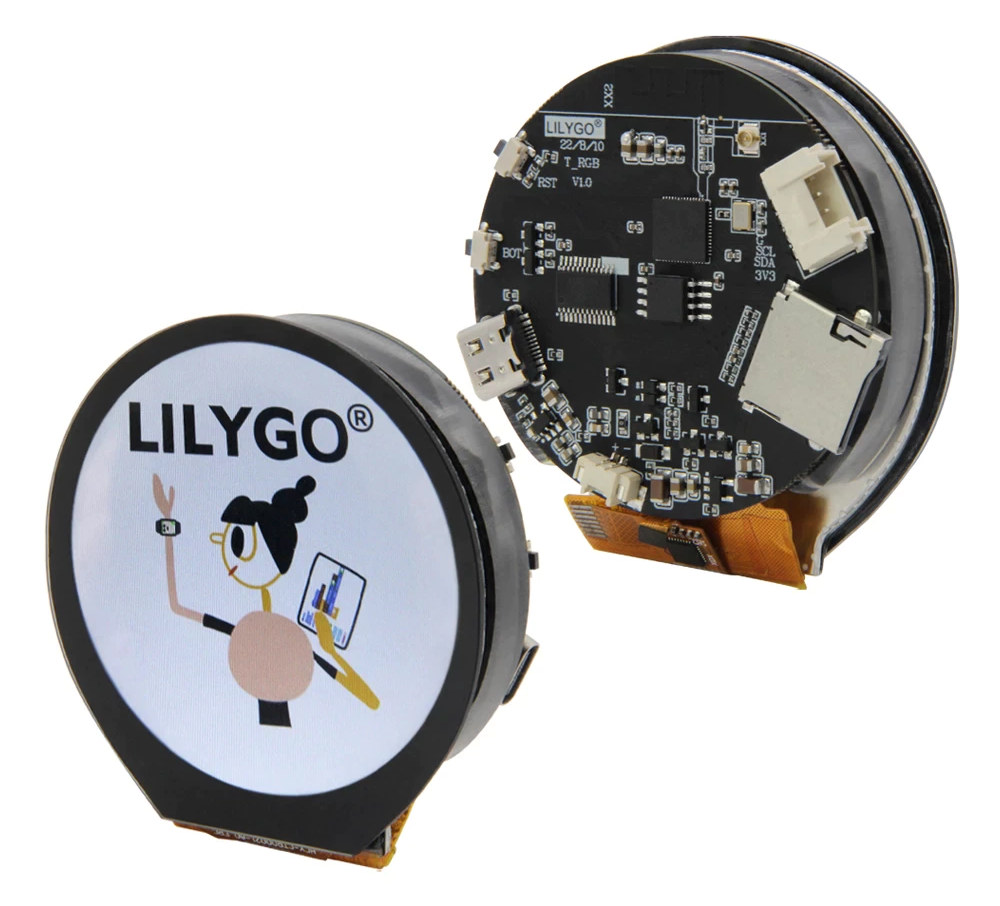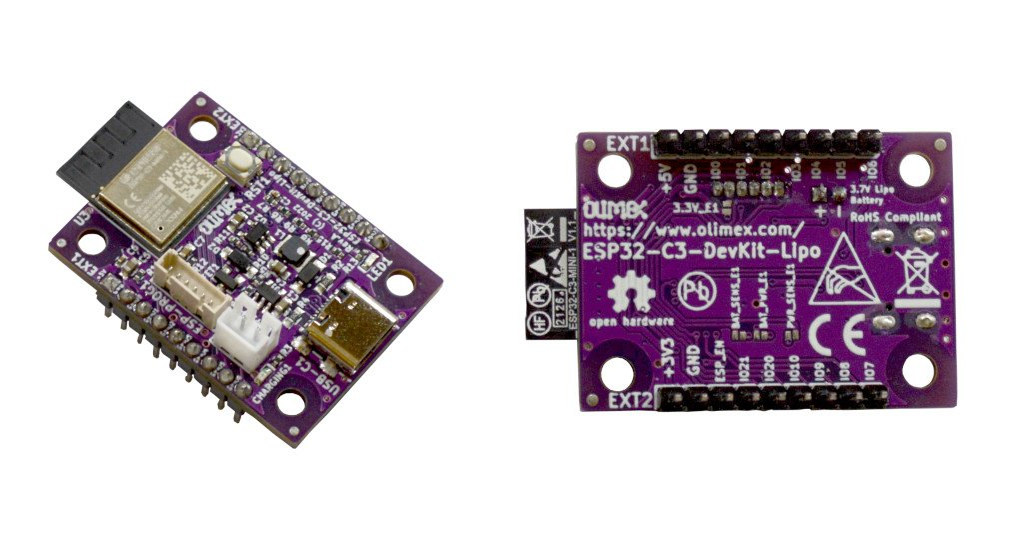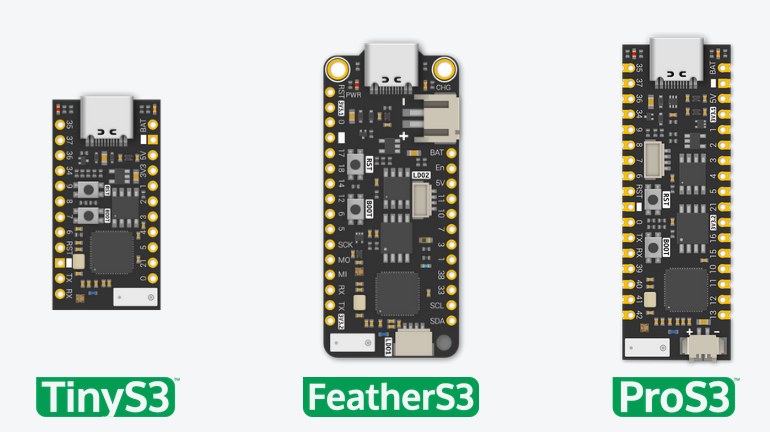Cytron’s Maker Pi Pico Mini comes with a Raspberry Pi Pico or Raspberry Pi Pico W microcontroller board. It has the same features as the larger Maker Pi Pico including a GPIO LED, WS2812B Neopixel RGB LED, a passive piezo buzzer, programmable push buttons, and a reset button. I would like to thank Cytron for sending the Maker Pi Pico Mini board fitted with a Raspberry Pi Pico W as well as a character RGB LCD and a 3.7V Lithium Polymer battery. In this tutorial, we will show how to make an Internet connected weather station with the Maker Pi Pico Mini board using Arduino code and the OpenWeather API. We’ve already covered the Maker Pi Pico Mini board, so we’ll have a closer look at the accessories SparkFun SerLCD character display The SparkFun SerLCD is a 16×2 character display with a Microchip ATmega328P microcontroller that handles commands sent from […]
Mini Pupper 2 – Raspberry Pi 4 / CM4 robot dog adds ESP32, ROS2 support, servo feedback (Crowdfunding)
Mini Pupper 2 is an improved version of the Mini Pupper robot dog powered by a Raspberry Pi 4 introduced last year. The new model support either the Raspberry Pi 4 SBC or CM4 module, adds an Arduino programmable ESP32 wireless MCU, support for ROS2, and servo feedback. Two variants are offered with the Mini Pupper 2 implementing position servo feedback, and the Mini Pupper 2 Pro position, velocity, and torque servo feedback. Other changes common to both variants include the addition of an IMU, microphone & speaker, a touch sensor, support for autocalibration, as well as a new mobile app for control. Mini Pupper 2 specifications: CPU module – Raspberry Pi 4 SBC or Raspberry Pi CM4 system on module MCU – ESP32 WiFi and Bluetooth dual-core microcontroller programmable with the Arduino IDE Display – 320×240 LCD for facial animation Audio – Built-in Microphone and speaker Camera – Support […]
roboBeats – Interactive music robot doubles as Bluetooth speaker (Sponsored)
Elephant Robotics just launched roboBeats interactive music robot & Bluetooth speaker on Kickstarter. The robot is comprised of a display, two arms, as well as touch sensors, and a speaker for user interaction. The company is known for its robots for education such as the myBuddy 280 or MechArm Pi 270 robotic arms based on Raspberry Pi 4 SBC, and while the roboBeats is more like a toy for children and adults alike, the ESP32 wireless microcontroller powering the desktop robot can also be programmed with the Arduino IDE. roboBeats key features and specifications: Wireless MCU – Dual Xtensa 32-bit microcontroller (ESP32) with WiFi and Bluetooth Display – 320×240 display Audio – Full frequency speaker Two arms Touch interfaces on the front body (chest) and top (head) Motors – Brushless (BLDC) motors with near-silent operation USB – 1x USB Type-C port located under the robot for power and programming Misc […]
Arduino-shaped development board ships with a Nordic Semi nRF9160 module
Actinius Icarus SoM DK development board follows the Arduino Uno form factor and is equipped with the company’s Icacus SoM based on Nordic Semi nRF9160 system-in-package with LTE Cat-M, NB-IoT, and GPS connectivity. The development kit provides an eSIM on the module and an additional Nano SIM socket on the mainboard, Arduino headers for a wide range of I/Os and compatibility with Arduino Shields, a set of user LEDs, reset and user buttons, and a battery charging port. Icarus SoM DK specifications: Icarus SoM SiP – Nordic Semi nRF9160-SICA system-in-package with Arm Cortex-M33 MCU, 1024 KB flash, 256 KB SRAM, and LTE Cat-M1 (eMTC), Cat-NB1 (NB-IoT), and GPS connectivity Storage – 64Mbit SPI flash On-board eSIM Antennas – 2x u.FL connectors for LTE and GPS Sensor – Low power 3-axis accelerometer I/Os – 2x 20 castellated holes with GPIOS, I2C, SWD, Reset, SIM card signals, and power pins Supply Voltage […]
Maker Pi Pico Mini adds battery, buzzer, GPIO LEDs to Raspberry Pi Pico (W)
Cytron’s Maker Pi Pico Mini is an add-on board for the Raspberry Pi Pico and the latest Raspberry Pi Pico W with a battery port, GPIO status LEDs, a WS2812B Neopixel RGB LED, passive piezo buzzer, user and reset button, as well as “Maker” ports for expansion. It comes with most of the features found in the company’s Maker Pi Pico board, but in a much more compact form factor, since the add-on board is only slightly larger than the Raspberry Pi Pico to allow for soldering using the castellated holes. Maker Pi Pico Mini specifications: Fitted with Raspberry Pi Pico / Pico W LEDs – 6x Status indicator LEDs for GPIOs, 1x RGB LED (WS2812B Neopixel) Audio – 1x Passive piezo buzzer (to play musical tones or melody) Buttons – Reset and user buttons Expansion 3x Maker ports compatible with Qwiic and STEMMA QT, as well as Grove modules […]
LILYGO T-RGB round color touch display is powered by ESP32-S3R8 wireless microcontroller
LILYGO T-RGB is a wireless 2.1-inch round color touchscreen display based on ESP32-S3R8 dual-core microcontroller with WiFi 4 and Bluetooth 5.0 connectivity, 8MB PSRAM, and 16MB flash storage. The device also includes a microSD card socket for data storage and a Grove I2C connector for expansion and supports LiPo battery power. The company also says it can be charged through USB, so the board must include a battery charging circuit contrary to some other boards from LILYGO. LILYGO T-RGB specifications: SoC – Espressif ESP32-S3R8 dual-core Tensilica LX7 microcontroller up to 240 MHz with vector instructions for AI acceleration, 8MB PSRAM, WiFi 4 and Bluetooth 5.0 LE + Mesh connectivity Storage – 16MB SPI flash, MicroSD card socket Display – 2.1-inch round 18-bit RGB color IPS TFT display with 480×480 resolution (ST7701S SPI controller), touchscreen panel USB – USB Type-C port for power and programming Expansion – Grove I2C connector Misc […]
Olimex ESP32-C3-DevKit-Lipo is a tiny RISC-V board with WiFi 4, Bluetooth 5.0, and a LiPo battery charger
Olimex has just launched the ESP32-C3-DevKit-Lipo board based on ESP32-C3 RISC-V wireless microcontroller offering WiFI 4 and Bluetooth 5.0 connectivity, some I/Os, as well as USB and JTAG. As its name implies, the board can be powered by a LiPo battery and charged through a USB Type-C port. It offers up to 15 GPIO for expansion and comes with an ICSP connector in case you need to reflash or debug the bootloader through a JTAG interface. ESP32-C3-DevKit-Lipo specifications: Wireless module – Espressif Systems ESP32-C3-MINI-1-N4 module with: ESP32-C3 (ESP32-C3FN4) 32-bit RISC-V single-core processor up to 160 MHz with 4 MB embedded flash, 384 KB ROM, 400 KB SRAM (16 KB for cache), 8 KB SRAM in RTC Connectivity – 2.4 GHz 802.11b/g/n Wi-Fi 4 1T1R up to 150 Mbps & Bluetooth LE 5.0 with PCB antenna USB – 1x USB Type-C port for programming and JTAG debugging Expansion – 2x 9-pin […]
Unexpected Maker TinyS3, FeatherS3 and ProS3 boards feature ESP32-S3 dual-core wireless MCU
Seon Rozenblum, better known as Unexpected Maker, has launched upgrades to its ESP32-S2 boards such as the TinyS2 with ESP32-S3 variants, namely TinyS3, FeatherS3, and ProS3 boards. The new boards share the same form factors as the TinyS2, FeatherS2, and ProS2, but they get a more powerful dual-core microcontroller with AI instructions and 512kB SRAM. The microcontroller also adds Bluetooth 5.0 Low Energy (BLE) connectivity with Bluetooth Mesh support, instead of just WiFi 4 connectivity found in the earlier boards. TinyS3, FeatherS3, and ProS3 boards share the following features: SoC – Espressif Systems’ ESP32-S3 with Dual-core 32bit Xtensa LX7 microcontroller up to 240MHz RISC-V ULP Co-processor 512KB SRAM 2.4GHz Wifi 4 (802.11b/g/n) Bluetooth 5.0 BLE + Mesh Memory – 8MB QSPI PSRAM Flash – 8MB to 16MB depending on the model. USB – 1x USB Type-C connector with reverse back-feed protection for power and programming Antenna – 3D high gain […]


